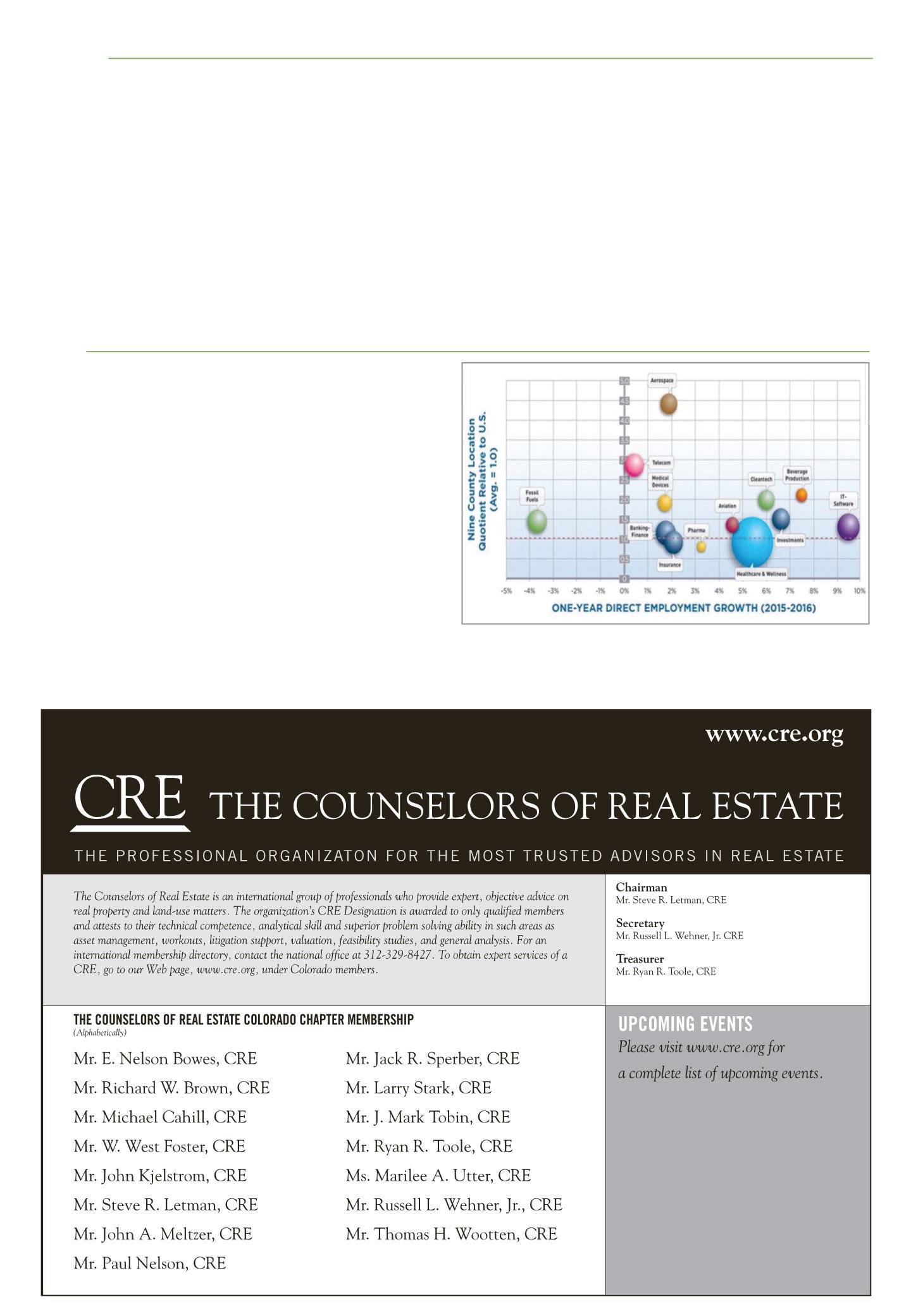

Page 30
— Office Properties Quarterly — September 2017
www.crej.comcontrols. Improvements like this are
never cheap and can put a significant
dent in discretionary budgets, which
might have otherwise been allocated
for public area design and furniture,
for example.
Again, new building owners don’t
have to contend with any compliance
surprises. Every code requirement
is already accounted for and every
building amenity has already been
designed, approved and constructed
with state-of-the-art methods and
materials.
The good news for those 1980s era
building owners is that occupancy
still boils down to what tenants
want, and tenants still want value. Of
course, it is the millennials who drive
the market and ultimately define
what value is.
“Those employees dictate not only
tenant design, but building retrofits
as well,” Revious said. “Tenant spaces
are going to continue to evolve, and
owners of older product are respond-
ing by bringing the sizzle, the cool.
That’s the necessity of the market.”
In fact, push back on the open-plan
office is fueling some of that sizzle.
C-suite players have been increas-
ingly vocal about the disruptive
nature of the open office, but many
employees who once may have laud-
ed the wide-open egalitarian work
style now are starving for privacy
wherever they can find it.
In a piece about office design strat-
egies published last month in Fast
Company’s Co. Design digital maga-
zine, one quoted architect put it this
way: “When [I] asked where a young
client goes for privacy, the response
was ‘Starbucks,’ which is not unique.”
The “not unique” part of that state-
ment is what speaks volumes. Com-
panies that are slow to address these
pervasive facility issues are paying a
price in lost employee productivity
and morale. On the other hand, 1980s
building landlords and their savvy
property managers are profiting from
these tenant-based design deficien-
cies by upgrading and repurposing
building common areas.
Both open and enclosed private
breakout spaces in or near lobbies, for
example, can offer building tenants a
privacy amenity that may have been
lacking or absent in their own offices.
Even fussy millennials may opt out of
Starbucks if given the option to stay
in their own office building and com-
plete the tasks that they previously
may have deemed impossible.
Of course, no two buildings are
alike, and property managers must
sell the individual benefits of those
renovations aggressively and consis-
tently. And intangibles do matter.
“It’s not always about the numbers,”
Kaboth maintains of the metro area’s
aging office inventory. “You can take
these ’80s buildings and create a
similar environment to new product
with the right renovations at the right
time. The bones are there. And every
building has its own personality.”
s
Brunner
Continued from Page 20ing, there are challenges to a robust
economy. For both landlords and ten-
ants, construction costs for tenant
improvements have raised dramati-
cally.This is partially due to a shortage
of construction labor, which has led to
fewer and higher bids across the board.
In a down market, landlords typically
had to provide turnkey tenant improve-
ment packages to compete for tenants.
Landlords are more bullish and tenants,
in turn, often contribute to their own
improvements. Alternatively, tenants
are signing longer-term leases with
higher tenant improvement allowances
or amortizing the cost of the improve-
ments into the lease rates.
There are challenges on the sales
side for office product as well.Valuing
properties can be challenging, primarily
with regard to properties sold to owner
occupants. As demand for owner-occu-
pied office properties has increased,
property values have gone up.The gap
between buyers and sellers seems to
be widening, and I have experienced
several instances where appraisals have
come in low because the pricing con-
tinues to rise, in some cases faster than
the market can keep up. It is important
to work with an experienced real estate
professional who can convey to the
seller and buyer the true value of the
property.
Is change on the horizon?The answer
is yes, but probably not dramatic change
thanks to our diverse economy. Rent
growth has slowed down to approxi-
mately half of what it was last year.The
supply is beginning to catch up with the
demand.The office market will contin-
ue to be a vibrant market but perhaps
at a slower pace than we have seen
over the last few years. Now is the time
to plan, prepare and execute to get the
most out of a strong office market.
s
Shaw
Continued from Page 21Denver Office of Economic Development
Denver metro industry growth: Increased professional and industrial diversification has allowed
the office market to withstand market challenges.
















